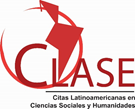Actividad biológica de extractos de pimenta dioica l Merrill sobre Sitophilus Oryzae L.
Abstract
Los experimentos se realizaron en el Laboratorio Provincial de Sanidad Vegetal de la Delegación Provincial de la Agricultura, el Centro de Estudios para la Trasformación Agraria Sostenible (CETAS) de la Universidad de Cienfuegos y el Laboratorio de Química Orgánica de la Facultad de Química Farmacia en la Universidad Central “Marta Abreu” de las Villas entre los meses de septiembre de 2017 a abril de 2018 para evaluar el efecto que ejercen los extractos de Pimenta dioica L. MERRILL obtenidos sobre Sitophilus oryzae L. Se colectaron y sometieron a un período de cuarentena, insectos en estado adulto de S. oryzae (Coleoptera; Curculionidae), posteriormente, los ensayos se montaron con insectos adultos de 10 días de edad. se confeccionó un dendograma donde se aprecian tres grupos bien delimitados, el primero quedó formado por extractos obtenidos por los métodos de maceración y el solvente hexano (PMH) y maceración y el solvente acetato de etilo (PMAE). Otro grupo quedó formado por maceración metanol (PMM), soxhlet metanol (PSM), ultrasonido hexano (PUH), ultrasonido acetato de etilo (PUAE), ultrasonido maceración (PUM) y un tercer grupo, integrado por un solo extracto, formado por soxhlet hexano (PSH), el cual quedó separado de los otros extractos. La pérdida de peso de los granos fue baja, registrándose valores que fluctúan entre 3,37 y 5,25 %, existiendo diferencia estadística significativa en los granos tratados con el extracto PSH respecto al extracto utilizado. Se destacaron por su mayor efecto repelente (IR = 0,63) los extractos PSH, PMH y PUH que presentan los valores más alejados a 1, lo cual implica un mayor efecto, mientras con el extracto PSAE se obtuvo el valor más cercano a 1 (IR = 0,73).
Palabras clave:
Extractos vegetales, gorgojos, insecticida, plagas de almacén.
ABSTRACT
The experiments were carried out in the Provincial Laboratory of Plant Health and the Center of Studies for Sustainable Agrarian Transformation of the University of Cienfuegos between the months of September 2017 to May 2018 to evaluate the effect of Pimenta dioica L. MERRILL by different methods with the use of three solvents on Sitophilus oryzae L. Insects in their adult stage of S. oryzae (Coleoptera; Curculionidae) were collected and subjected to a quarantine period; later, the tests were mounted with 10-day old adult insects . The dendrogram was formed by the maceration methods and the solvent hexane (PMH) and maceration and the solvent ethyl acetate (PMAE). Another group was formed by maceration methanol (PMM), soxhlet methanol (PSM), ultrasound hexane (PUH), ultrasound ethyl acetate (PUAE), ultrasound maceration (PUM) and a third group, composed of a single extract, formed by soxhlet hexane (PSH), which was separated from the other extracts. The weight loss of the grains was low, registering values that fluctuated between 3.37 and 5.25%, there being significant statistical difference in the grains treated with the PSH extract with the rest of the extracts used. The PSH, PMH and PUH extracts that show the values farthest from 1 stand out for their greater repellent effect (IR = 0.63), which implies a greater effect, whereas with the PSAE extracts the value closest to 1 (IR=0.73).Keywords:
Plant extracts, weevils, insecticide, warehouse pests.Downloads
Published
How to Cite
Issue
Section
License
La editorial "Universo Sur", de la Universidad de Cienfuegos, publica el contenido de la Revista "Universidad y Sociedad" bajo una Licencia Creative Commons Atribución-NoComercial-SinDerivar 4.0 Internacional.
© Podrá reproducirse, de forma parcial o total, el contenido de esta publicación, siempre que se haga de forma literal y se mencione la fuente.









